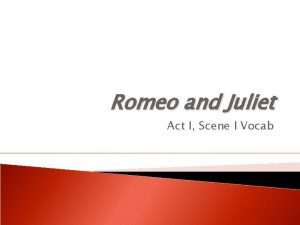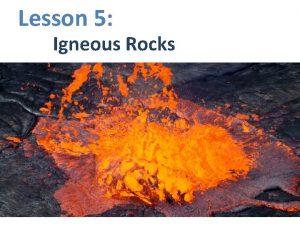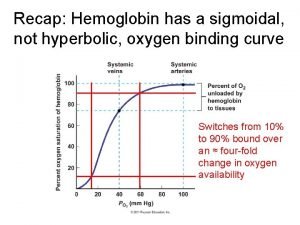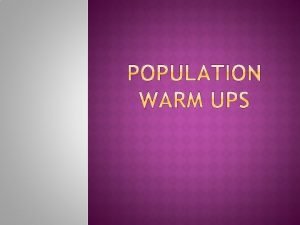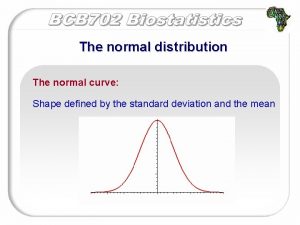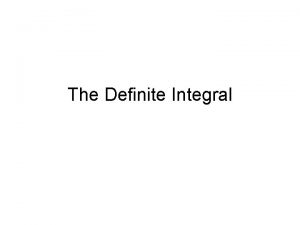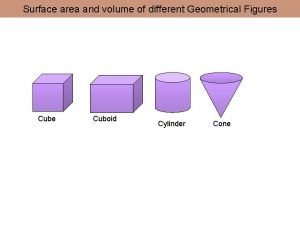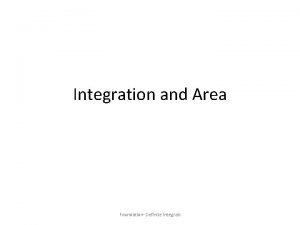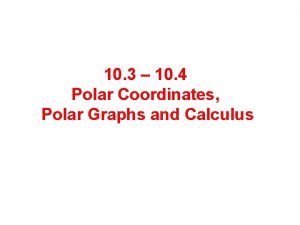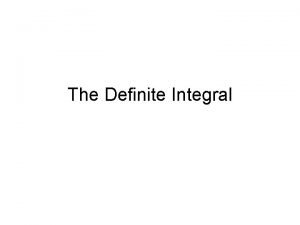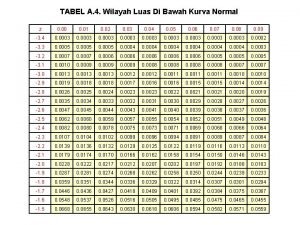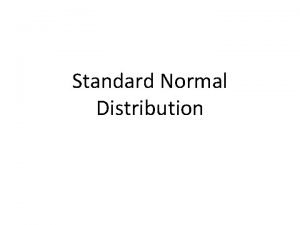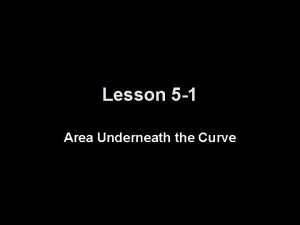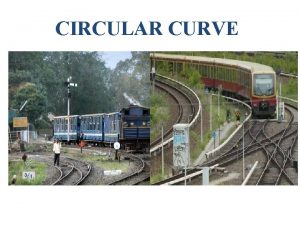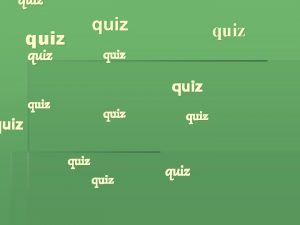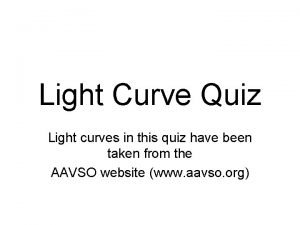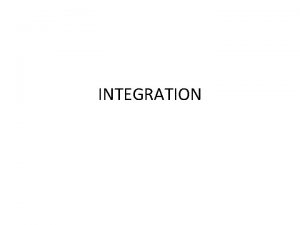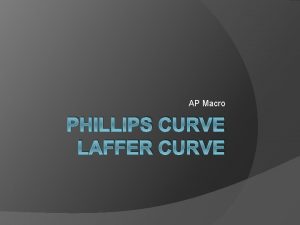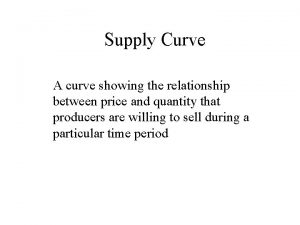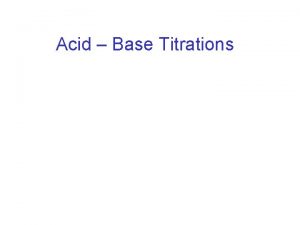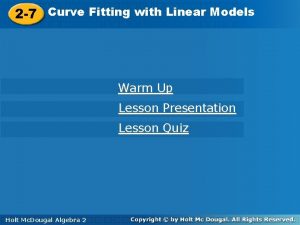Lesson 5 1 Area Underneath the Curve Quiz















- Slides: 15

Lesson 5 -1 Area Underneath the Curve

Quiz • Homework Problem: • Reading questions:

Objectives • Find the area underneath a curve using limits • Find the distance traveled by an object (like a car)

Vocabulary • Area problem – find the area under the curve (and the x-axis) between two endpoints • Area – is the limit (as n approaches infinity) of the sum of n rectangles • Distance problem – find the area under the velocity curve (and the x-axis) between two endpoints

Area Under the Curve How do we find the area of the shaded region? a b

Example 1 Sketch the graph and use geometry toyfind the area: y 3 2 5 x -1 -1 -2 -1 f(x) = 2 x 2 5 -x 0≤x<1 2≤x≤ 3 3< x ≤ 5 Area = 1 + 4 + 2 = 7 5 x 4 - x² 0≤x≤ 2 x-2 2<x≤ 5 f(x) = Area = ¼ (4π) + ½ (9) = 7. 642

Inscribed Rectangles 1 a N=5 2 3 4 5 b The area in yellow is the error in using inscribed rectangles to estimate the area under the curve. Inscribed rectangles underestimate the area!

Circumscribed Rectangles 1 2 3 a N=5 5 4 b The area in blue above the curve is the error in using circumscribed rectangles to estimate the area under the curve. Circumscribed rectangles overestimate the area!

Inscribed Rectangles N = 10 Less error 1 a 2 3 4 5 6 7 8 9 10 b The area in yellow is the error in using inscribed rectangles to estimate the area under the curve. Inscribed rectangles underestimate the area!

Circumscribed Rectangles N = 10 Less error 1 a 2 3 4 5 6 7 8 9 10 b The area in blue above the curve is the error in using circumscribed rectangles to estimate the area under the curve. Circumscribed rectangles overestimate the area!

Inscribed vs Circumscribed Summary • Inscribed Rectangles under estimate the area under the curve. • Circumscribed Rectangles over estimate the area under the curve. • As the number of rectangles increase the error in the estimation decreases.

Rectangles from Midpoints 1 2 3 a N=5 5 4 b The area in yellow is the underestimations and the area in blue are the overestimations of the area. Midpoints seem to give better estimates than either inscribed or circumscribed rectangles.

Trapezoidal Estimates 1 3 a N=5 5 2 4 b The area in yellow is the underestimations and the area in blue are the overestimations of the area. Trapezoids also give better estimates than either inscribed or circumscribed rectangles.

Example 2 a Estimate the area bounded by the function f(x) = x² + 1 and the x-axis on the interval [0, 2] with 5 subintervals using inscribed rectangles. xi = a + (i-1)∆x y 5 ∆x=(b-a)/n Area of Rectangle = l ∙ w Ri = (F(xi)) ∙ (∆x) R 1 = (1+ 0²) ∙ (0. 4) = 0. 4 R 2 = (1+ 0. 4²) ∙ (0. 4) = 0. 464 5 1 2 3 R 3 = (1+ 0. 8²) ∙ (0. 4) = 0. 656 4 R 4 = (1+ 1. 2²) ∙ (0. 4) = 0. 976 x 0 0 2 True Area = 4. 666 R 5 = (1+ 1. 6²) ∙ (0. 4) = 1. 424 ∑Ri = 3. 92

Summary & Homework • Summary: – Inscribed Rectangles under estimate the area under the curve – Circumscribed Rectangles over estimate the area under the curve – Distance traveled is the area under the velocity curve – In order to find the area underneath a curve we must take a limit of the sum of rectangles as the number of rectangles approaches infinity • Homework: – pg 378 – 380: 2, 5, 12, 13, 15
 Romeo and juliet act 1 scene 2 vocabulary
Romeo and juliet act 1 scene 2 vocabulary Types of igneous rock
Types of igneous rock Chapter 1 lesson 1 your total health
Chapter 1 lesson 1 your total health Sigmoidal curve vs hyperbolic curve
Sigmoidal curve vs hyperbolic curve S curve and j curve
S curve and j curve Balancing occlusion
Balancing occlusion J curve vs s curve
J curve vs s curve Shape normal
Shape normal Area under the curve integration
Area under the curve integration Lateral area of cylinder
Lateral area of cylinder Formula for area under a curve
Formula for area under a curve What's above calculus
What's above calculus Area between 2 curves formula
Area between 2 curves formula Max min inequality definite integrals
Max min inequality definite integrals Tabel luas
Tabel luas The area under a standard normal curve is?
The area under a standard normal curve is?
